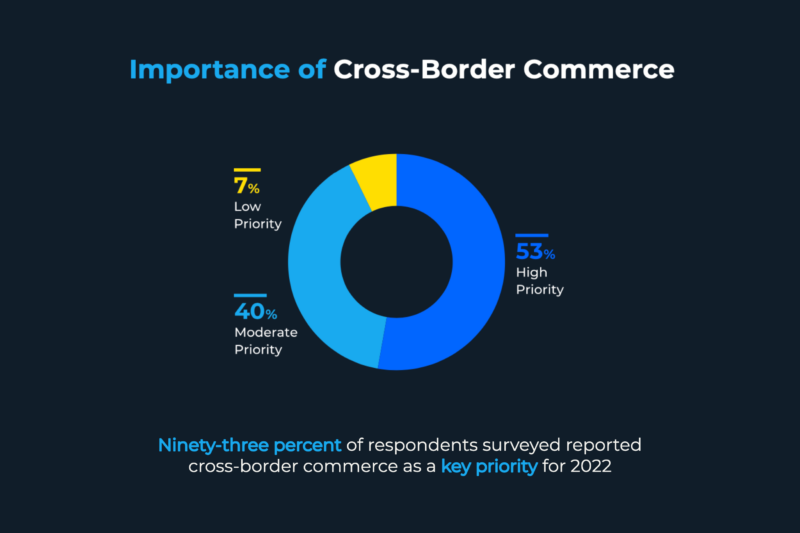What are the Five Elements of Cross-Border Commerce?
Localization
Customers expect a localized experience that makes purchases intuitive and easy. Make this happen by communicating in your customer’s language, displaying in local currencies, and supporting local payment methods.
Communicate in your Customer’s Language
Having a professionally translated site navigation, product descriptions, reviews, and instructions throughout the checkout experience helps build trust. Modern browsers may be able to translate sites, but they leave the content feeling foreign and unfamiliar. Consider providing customer support and answering customer questions in local languages for a better buying experience in your top markets.
Display in Local Currencies
Displaying prices in local currency is not optional. Research by Retail Info System shows that one in four shoppers will leave a website if their local currency is not displayed. Make cross-border buying easier by displaying local currencies.
Support Local Payment Methods
Today up to 16 percent of shoppers will abandon a transaction when their preferred payment option isn’t available (FuturePay). And preferred online payment methods can vary significantly from country to country. Many western countries favor cards, while in Southeast Asia, offering bank transfers and ewallets is a must. Work with a payments provider like Rapyd to simplify global commerce by offering local payment methods across 100+ countries with one integration.
-
Risk Management
No matter your business size, risk management can’t be ignored when expanding overseas. To manage risk, be prepared by working with a global payments vendor that offers know your customer (KYC) and know your business (KYB) protections, customizes your fraud rules, and offers cross-border payment fraud protection that goes beyond cards.
Integrated KYC and KYB Means Better Security
The most effective fraud management systems use AI and machine learning to assess patterns in transactions in real-time for faster fraud detection and identity verification. Fraudsters are becoming increasingly sophisticated, which can be especially challenging to detect for online marketplaces processing hundreds of transactions in real-time.
Staying a step ahead of fraudsters means that marketplaces and merchants need to be extra vigilant and ensure their payment processors provide built-in know your customer (KYC) and know your business (KYB) infrastructure and processes.
Customize Your Fraud Rules
When businesses invest in fraud protection technology, it can help them identify chargeback fraud opportunities before they occur. Setting up rules to block IP addresses or countries and creating alerts to review high-value transactions before they are approved are just a few examples of how customization can help you to decrease the number of fraudulent transactions.
Cross Border Payment Fraud Protection that Goes Beyond Cards
Reduce card and local payment method acceptance risks while safeguarding your customers’ shopping experiences worldwide. Having an always-on fraud protection partner can seriously reduce your risk of disputes stemming from fraud overall. Rapyd Protect is embedded into Rapyd’s platforms, so you are protected from day one. Take advantage of a top-notch anti-fraud platform with no additional cost, no fees and no additional coding.





